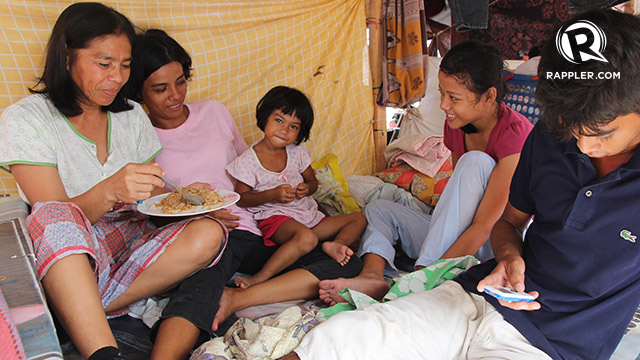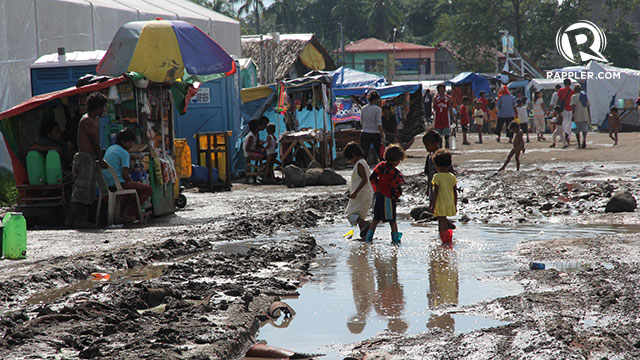SUMMARY
This is AI generated summarization, which may have errors. For context, always refer to the full article.

ZAMBOANGA CITY, Philippines – There are still 69,000 of them – people still displaced after Zamboanga City was sieged by rebels groups in September. In 14 overcrowded and unsanitary evacuation centers and informal settlements, they face bleak prospects.
Putli Suhaili, 45, is a widow with 5 children. In the sports stadium where they are staying with 20,000 other people, she feels they have been forgotten.
“We are having very difficult times, there is not enough food and water, and our kids are dying in these conditions. I have no money and nowhere to go.”
With 44 deaths reported in the evacuation center since September 9, the evacuees live with the risk of a disease outbreak. There is need to improve support for food, drinking water, health services, tents, and other necessities. The safety of women and children is a growing concern.
More displaced families say they cannot return to their homes because they were destroyed, or because they have lost their livelihood.
Among them is Boging Gamilay, a fisherman from Mariki, a village outside Zamboanga City. “Living conditions are not good here, but we have nowhere to go back to – my boat, house, and livelihood…all are gone now.” He is living in an informal camp close to the main settlement – in a hut made of sticks and grass and covered with plastic sheets.
The standoff between a faction of the Moro National Liberation Front (MNLF) and government forces left approximately 132 people dead, with roughly 128,000 people affected in Zamboanga and Basilan.
More than 6,000 houses destroyed
An estimated 46,000 jobs were lost or disrupted due to the conflict and more than 6,600 homes were completely destroyed by fire. The total damage is estimated at US$73.2 million, according to the government.
When heavy rains pounded the region in October, floods submerged parts of the evacuation sites, further increasing health risks for displaced families.
Cases of malnutrition have been reported, with 276 children under the age of 5 reported as of November 16.
“The camp is very crowded, living conditions are not healthy, one of our major concerns is children’s health related to waterborne diseases,” said Safia Crisostomo, camp manager for the Department of Social Welfare and Development.
“Some expansion in wash and sanitation activities, like clean water and latrines, could improve the situation,” she said.

The government and the humanitarian community face two key challenges in the area:
- to decongest the two large evacuation centers to prevent diseases outbreak
- to transfer internally displaced people from 10 schools to transitory sites, so schools can resume classes
Of course, there are the long-term goals that programs should address: rebuilding of homes, recovery of livelihood, reconstruction of schools, and counseling for those traumatized by the conflict.
Some aid workers are warning that there is only a small window of time before health risk prevention is put in place. “With the rainy season here, the risk of further disease outbreaks is alarming. The sanitation and health facilities in the camps are insufficient,” said Sharon Pacaldo, a nurse for the Philippine Red Cross.
So far, only US$3.6 million has come in for the Zamboanga aid that requires $24.4 million. The Office for the Coordination of Humanitarian Affairs (OCHA) is urging international donors not to leave Zamboanga a “forgotten crisis.” – Rappler.com
The writer is with the Office for the Coordination of Humanitarian Affairs in the Philippines, which is part of the United Nations Secretariat that coordinates humanitarian actors to ensure a coherent response to emergencies. OCHA advocates the rights of people in need, promotes preparedness and prevention, and facilitates sustainable solutions.
Add a comment
How does this make you feel?
There are no comments yet. Add your comment to start the conversation.